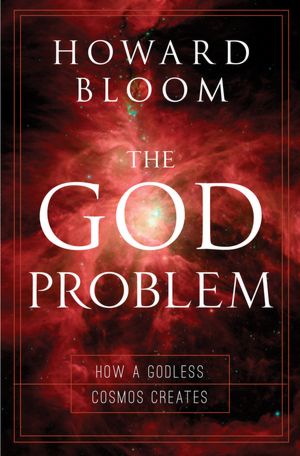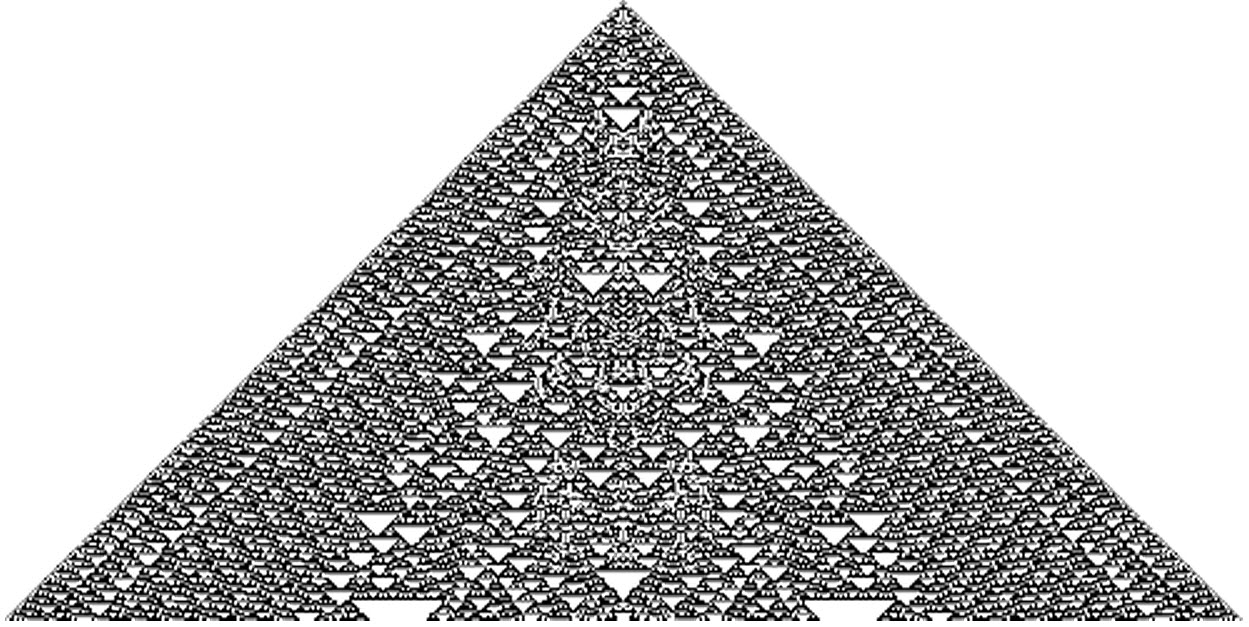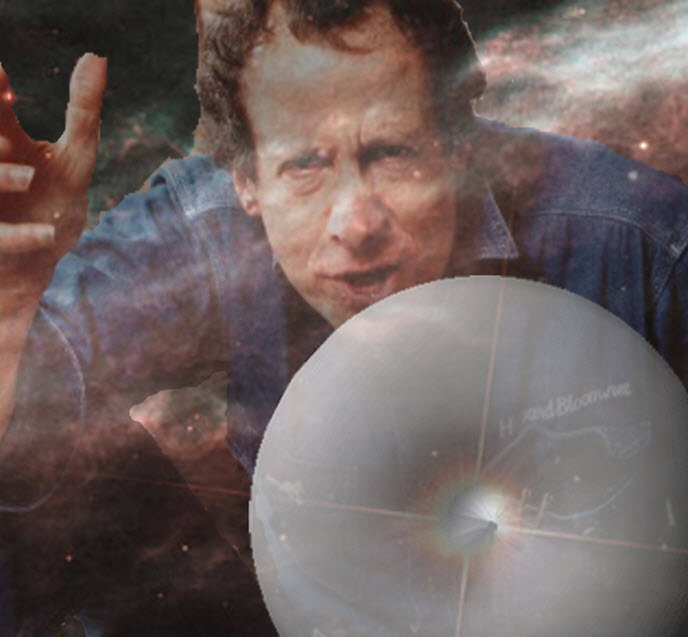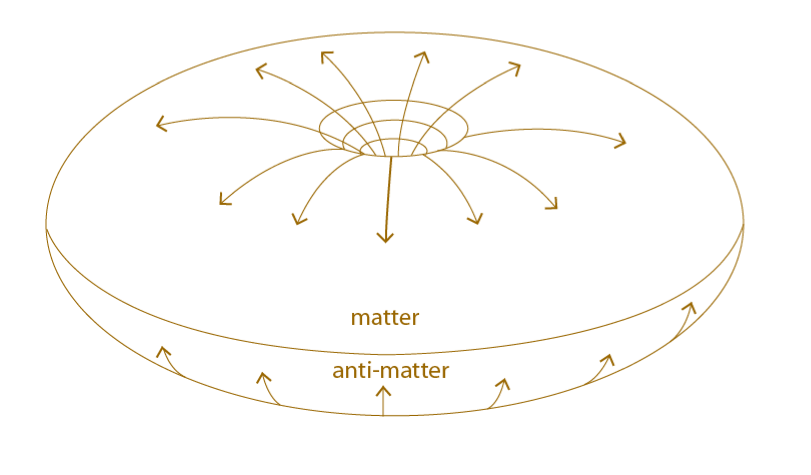book review | The God Problem: How A Godless Cosmos Creates
August 14, 2012 by Giulio Prisco
Howard Bloom‘s forthcoming book The God Problem: How A Godless Cosmos Creates, is arguably his best book so far, a page-turner with deep thoughts and entertaining bits on every page.
Is The God Problem a book on the history of science? No, more like a philosophical novel. Wait, perhaps an autobiography? Pop culture?
All of the above, and none. The God Problem defies categorization; it’s a cascade of books within books within books, like the novels of Joyce and Pynchon. The difference is that Bloom writes about the thoughts of the deepest thinkers of all times, from the Babylonians to our days, then proposes new ideas of his own.
I call it “scientific poetry.” The science is rigorous, and the philosophy is sound, but Bloom is first and foremost a great writer who makes cerebral stuff emotionally moving and entertaining.
This book has no equations, it is not written for scientists, but it’s an excellent science book that will help readers not only understand science better, but also love it more.
Toolkits of the mind

Ziggurat model. What simple things right under our noses do we fail to see? asks Howard Bloom (Credit: Sadegh Malek Shahmirzadi, Wikimedia Commons)
The God Problem starts with the story of how mathematics was invented in fourth-millennium BC Mesopotamia to count, split, inventory, and (especially) tax property. He puts you in the head of a Mesopotamian. You suddenly see how radically different and strangely alien an ancient viewpoint was.
The Babylonians had no circles in their mental toolkit. None. To them, everything was a line or a flat surface, like the surface of an iPhone-sized clay writing tablet. Every reference book in sight asserts that the Babylonian’s invented the 360 degrees of angles.
But The God Problem says they did not. And without the concept of the angle and the circle, the Babylonian sky was as flat as a ceiling and Babylonian astronomers never bothered to look up at the sky. Instead, they focused on a line — they noted where dots of light poked into the flat ceiling of the heavens from the line they called the “cattle pen” of the horizon.
The bottom, well, umm, line? Explains The God Problem, the Babylonians had circles and angles right under their noses. They used circles in their decorative art. And they crafted perfect right angles to map out the corners of their ziggurats. But they never uploaded the circle and the angle to the toolkit of the mind. What simple things right under our noses, asks Bloom, do we fail to see? What simple things that we take for granted could be the next big tool of mind?
Bloom moves to the Greeks in the first century BC and produces more surprises. Pythagoras — considered by Bertrand Russell and Bloom as one of the people who had the biggest influence in the development of Western thought — was the master charismatic cult leader of all times. He preached that ultimate reality is based on numbers.
Writes Bloom, “One of Pythagoras’ modern biographers, Christoph Riedwig, asserts that if you and I were to meet Pythagoras, … we’d see him as a madman with exhibitionist tendencies. Why? Pythagoras’ way of presenting himself smacked not of reason, but of show business. He was tall, charming, and strange.
His robe was a startling white. And unlike your everyday Greek man of intellect, under his robes he wore an outrageous violation of the fashion of the day — a contribution to couture from the horse-riding barbarian warriors of the steppes to the northeast, the Scythians. Trousers.”
Again, the strange way Pythagoras reasoned reveals more of just how fragile and temporary our modern ways of thought may be.
Deep structures of the cosmos
You really don’t want to miss Bloom’s account of the life and works of the thought leaders between Greeks and the thinkers of today. But fast-forwarding to our age, Bloom shows that modern ponderers are very much like Pythagoras.
Remember, Pythagoras was sure that number is behind everything, from the music of the heavens to the sneezes, coughs, and mood swings in your daily life. Instead of numbers, Benoit Mandelbort, John Conway, and Stephen Wolfram hunt for another kind of what Bloom calls “Ur patterns” — “deep structures of the cosmos, patterns the cosmos repeats over and over again.”
But Conway and Wolfram’s structures are algorithms, simple rules. The delicate fractal shapes of Benoit Mandelbrot — a Jewish mathematician escaped from Warsaw whose uncle, a modern Pythagoras, founded a secret society of mathematicians — are staggeringly complex but not random. On the contrary, they are generated by iteration of simple mathematical formulas.
The buzzing and meaningful complexity of reality can also be generated, Bloom shows, by iteration of simple rules. Termites build amazingly complex structures by the repetition of simple behaviors that are hardwired, by evolution, in their tiny brains, he points out.
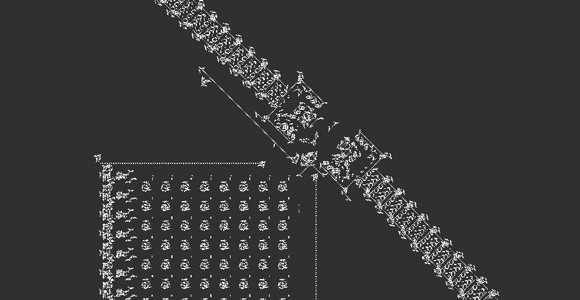
A Universal Turing Machine (UTM) implemented in Conway’s Game of Life. The tape, which acts as a storage medium, passes the programmable read/write head. (Credit: Paul Rendell)
John Conway is the inventor of the popular and influential Game of Life, and Stephen Wolfram is the creator of A New Kind of Science. Digital physicists like Conway and Wolfram believe that the best model for ultimate reality, whatever that is, may be cellular automata, where — as in Mandelbrot’s fractals — simple rules and initial patterns produce unpredictable, beautiful and complex results .
“Can you build an entire cosmos from simple rules?” wonders Bloom. “Stephen Wolfram is convinced that you can. In fact, he’s certain that a variation on John Conway’s computer game can even solve such basic scientific mysteries as the unification of quantum physics and relativity.”
At 14, Wolfram “wrote his first book on particle physics. At 17, the scientific journal Nuclear Physics published a paper he’d written. At 18, he wrote a widely acclaimed paper on heavy quark production,” and became the youngest person to win a MacArthur Genius Grant. “Wolfram concluded,” says Bloom, “ that you could even use cellular automata to solve seemingly impossible problems like how to reconcile quantum physics with relativity.”
Then there’s a parallel plot. Many authors write to clarify their thoughts to themselves, and Bloom is no exception: in the autobiographical sketches scattered throughout the book, he writes about himself. But he puts you in his shoes — or his bedroom slippers — and lets you experience his adventures. In the process, you get to be Jewish for one day. Then you become an atheist at the age of 13 and learn why Bloom does not feel the need to create a God to create the universe.
A debilitating illness leaves you — a scientist whose experiment in mass culture turns you into a media expert/publicity consultant for Michael Jackson, Prince, Bob Marley, Peter Gabriel, and many other stars — confined to your bed for years and unable to work. But from your bed, you discover the Internet and create online communities to discuss your ideas, including some of the ideas that later result in your books.
You manage to get out of your bed after 15 years. And in 2006, as Bloom, you co-author a paper in the theoretical physics Internet preprint site arXiv on “Conversational (dialogue) model of quantum transitions.” The radical paper proposes that the source of a particle and all of that particle’s possible detectors “talk” before the particle is finally observed by just one detector. These talks do not take place in physical time, but in “hidden time.”
The hidden time model, says Bloom, “treats time as a form of communication. It treats time as a form of information extraction. It treats time as a form of translation. In fact, time is the ultimate extractor of implicate properties. Or, to use Claude Shannon’s word, time is the ultimate extractor of meaning.” In typical Bloom style, the Appendix, which more conventional scientists would probably fill with formulas, describes the social life of bees.
Entropy, information, and meaning
I never met him in person, but I had the pleasure and the honor to meet him virtually and talk to him in many online events. I think the Internet, an emerging group mind built by a “recruitment strategy” that makes us all parts of a planetary (and tomorrow cosmic) search engine and meaning generator, is one of the protagonists of this book.
In Bloom’s profile of Claude Shannon, another seminal thinker who played an important role in the computer technology of our times, “information” is defined as the entropy (disorder) of a signal.
According to Shannon, maximally entropic (random) noise — a sequence of random numbers — cannot be compressed to something simpler and therefore has maximum information content.
But that raises a problem: random noise, by definition, doesn’t have any useful information, Howard Bloom says, or meaning! Important areas of modern science (What is entropy? Does the universe destroy information or produce information?) are muddled by confusion between different aspects of information.
Entropy is about information, but life is about meaning, he points out: “Meaning means more than it does in Claude Shannon’s vocabulary. Meaning is a sense of direction. A sense of where to go next.”
In David Bohm’s “implicate order” formulation of quantum physics, hidden meaning unfolds in a seemingly random world. Bohm wrote in his 1980 Book Wholeness And The Implicate Order that “what we call empty space contains an immense background of energy, and matter as we know it is a small, ‘quantized’ wavelike excitation on top of this background, rather like a tiny ripple on a vast sea.” Space, he said, is “full, not empty.” Full of what? Implicate order, says Bloom.
“Strangely, Bohm had his greatest impact on the New Age movement. In 1985, he co-wrote a book on The Ending of Time with legendary Indian “World Teacher” J. Krishnamurti, and his dialogs with the Indian mystic were collected in two more books.”
The big bagel theory
Howard also describes some imaginative physics ideas of his own, like his “big bagel theory,” devised in 1959 [sic].
Imagine a big bagel (similar to a doughnut) with an infinitesimally small hole in the middle.
The matter universe expands rapidly (now known as “inflation”) up from the big-bang singularity at the hole, and then slows down, and over the ~14 billion years, expands out in a circle on the surface of the bagel.
An antimatter universe does the same, he explained, but moves in the opposite direction in the hole: down. In the distant future, “once the two universes run out of the energy that has shot them away from each other, they ‘sense’ each other’s call. They slowly begin to fall into each other’s arms. They slowly begin to succumb to the pull of each other’s gravity.
“When matter and antimatter meet at the outer edge of the bagel they annihilate. They turn to raw energy. And they do a dimensional flip. The outer edge of the bagel becomes the bagel’s hole. The hole from which a new big bang emerges.”
Fast-forward to 2003, when cosmologists noticed unexpected “circles in the sky” patterns in the cosmic microwave background (CMB) that could be best explained by — you guessed it — the “doughnut universe” model, according to Frank Steiner, a physicist at Ulm University in Germany, in a 2008 paper in Classical and Quantum Gravity (arXiv version) cited in Nature News.
I am sure all readers of Bloom’s previous books, The Genius of the Beast: A Radical Re-Vision of Capitalism, The Lucifer Principle: A Scientific Expedition Into the Forces of History, Global Brain: The Evolution of Mass Mind From The Big Bang to the 21st Century, and How I Accidentally Started The Sixties, are impatiently waiting for the release of The God Problem on August 24.
They will not be disappointed.
